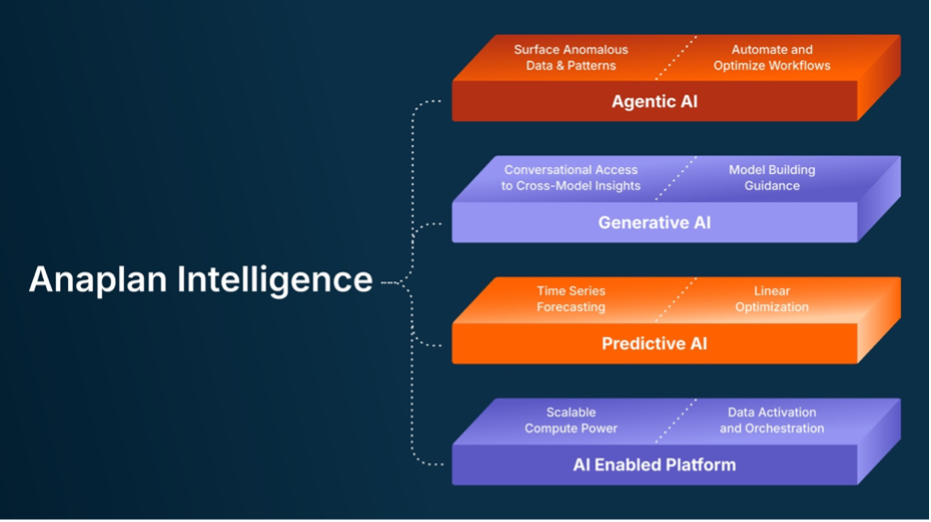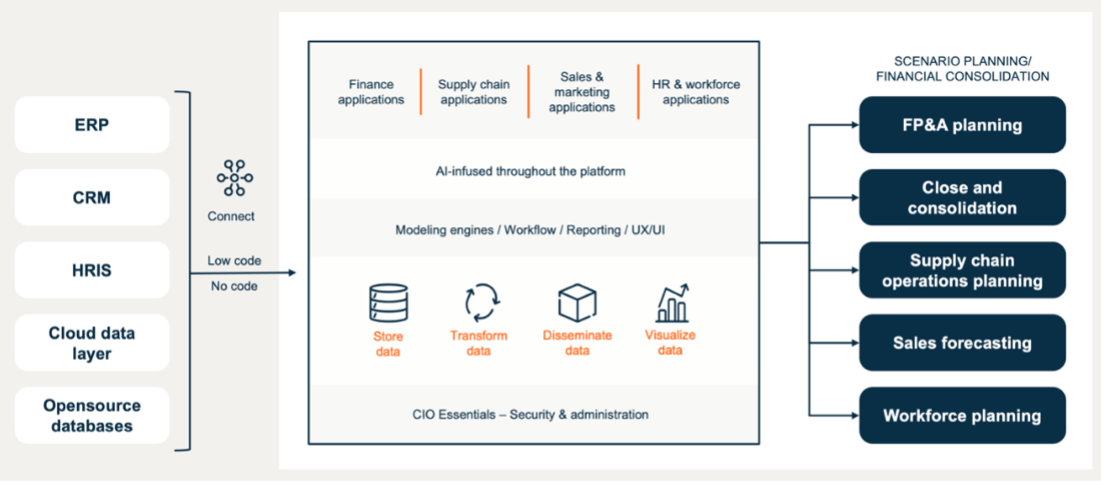Author: Miki Sato is a Product Manager, Product Management Team (Data Management) at Anaplan.
Your data is now harmonized, normalized, and ready for the AI era.
1. The scale AI needs
Are you ready to truly leverage AI, but constantly hit a wall because of data chaos?
In today's fast-paced environment, planning needs to be faster, more accurate, and predictive. Yet, for most organizations, data lives in fragmented silos — scattered across CRM, ERP, and supply chain systems. This fragmentation is the single biggest barrier to adopting AI.
This challenge is not unique to you: Gartner (2025) predicts that over 60% of AI projects will fail due to poor data quality and lack of context. The business landscape is simply too complex for traditional integration models. McKinsey’s *State of AI 2025 report further shows data infrastructure is now the strongest predictor of AI success.
That's where Anaplan Data Orchestrator (ADO) comes in — to turn integration into intelligence.
This marks the start of a fundamental evolution in our platform. We are moving beyond simply collecting data to creating the trusted, harmonized, and contextually-aware data foundation your business needs to make AI work for you.
2. Reflecting on Anaplan Connect 2025
In 2025, Anaplan hosted Connect events around the world — from Tokyo to Amsterdam, Brussels, and Cape Town. The focus was clear: AI strategy.
From Anaplan Intelligence to CoPlanner, CoModeler, and Agent Studio, Anaplan demonstrated how AI is becoming integral to enterprise planning. Chief Product Technology Officer (CPTO) Adam’s keynote message in Boston was simple yet powerful: scale matters. Data harmonization isn’t optional — it’s the foundation of intelligent planning.

Figure 1: Anaplan Intelligence: From predictive to agentic AI, built on an AI-enabled data foundation.
🎥 Watch the keynote
“Anaplan Innovation: AI and Product Update” – Explore how Anaplan’s $500 million investment in innovation across ADO, Polaris, and AI agents is reshaping enterprise planning for an AI-ready future.
3. Anaplan Data Orchestrator today
Before AI can deliver meaningful, explainable, and enterprise-grade insights, it needs something more fundamental than algorithms: trusted, harmonized data. This is why Anaplan’s AI strategy begins not with models, but with the data layer that powers them.
ADO plays a central role in this foundation. It is built on the proven capabilities of Anaplan Connect and CloudWorks — but goes further, transforming how organizations prepare and manage the data pipelines that intelligent planning depends on. ADO’s purpose is not just to move data, but to enable teams to harmonize, validate, and monitor it with the trustworthiness required for AI-driven decisioning.
Current ADO features:
- Model-aware environment: ADO provides a model-aware environment for scheduling, transformation, and error handling within the Anaplan ecosystem.
- Decoupled management: Crucially, ADO decouples data management from calculation, allowing teams to manage orchestration independently from model logic.
- Scalability and future-readiness: This architectural separation makes data pipelines more scalable today and positions ADO to support deeper integrations — including CloudWorks, Open APIs, and AI-ready data layers — as these capabilities evolve.

Figure 2: Anaplan platform architecture, connecting external data sources to AI-infused planning applications.
4. Advancing toward an AI-ready data foundation
Looking ahead, we plan to strengthen the data foundation that powers Anaplan — enabling future capabilities designed to make data more semantic, explainable, and resilient. These enhancements are intended to provide the level of trust required for AI to deliver meaningful business value.
Core data foundation features:
- Unified Data Model (UDM): Standardizing business entities across planning domains ensures consistency and interoperability across applications. It allows scenarios such as sales forecasts, workforce plans, and financial projections to share a common structure and language.
- Ontology capabilities: Helping AI understand how concepts like margin, revenue, and cost relate to each other. This enables natural, context-aware interactions — for example, asking "What's driving margin variance?" and receiving a meaningful, data-backed answer.
- Anomaly detection: Automatically identifying outliers and data quality issues before they affect forecasts. It strengthens trust in AI-driven insights by surfacing anomalies and emerging trends early.
- Connectivity and APIs: Expanding real-time, bi-directional data flows between Anaplan and external systems, enabling organizations to synchronize planning data instantly as markets shift.
This foundation allows organizations to synchronize planning data not only as snapshotsbut as semantic, explainable, and auditable data that truly understands context — not just dull data points.
5. From scale to intelligence
The combined power of ADO and the unified data foundation is transforming Anaplan from a planning tool into a genuine platform where intelligence is built into the fabric of your data.
Ultimately, ADO is not just about integration; it's about creating the data confidence needed for AI to make better, faster, and more transparent decisions. This ensures that AI within Anaplan doesn't act in isolation—it collaborates, learns, and adapts across the enterprise.
Let’s make it practical starting with your data.
…………
References